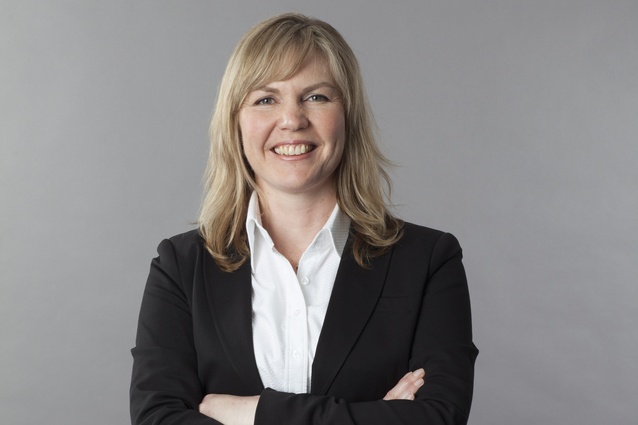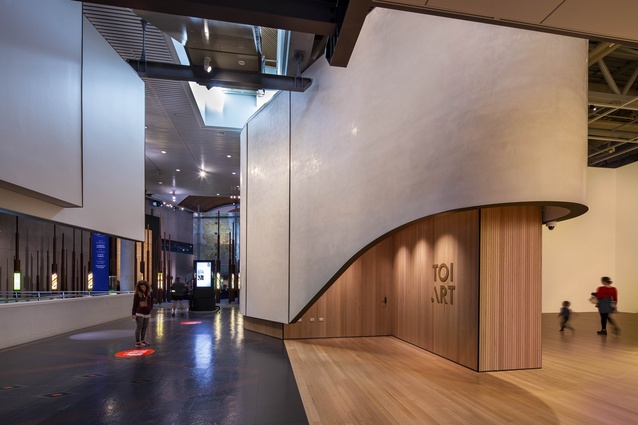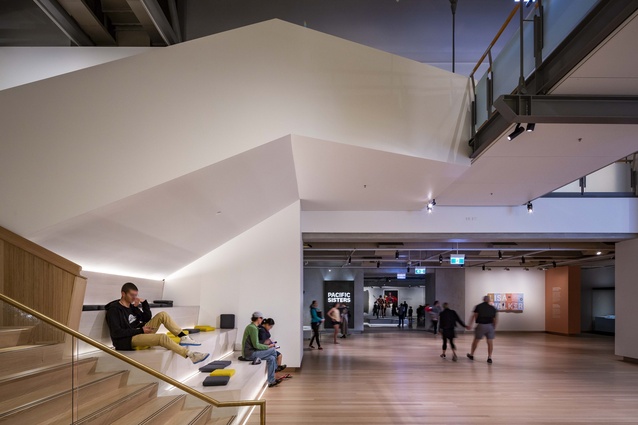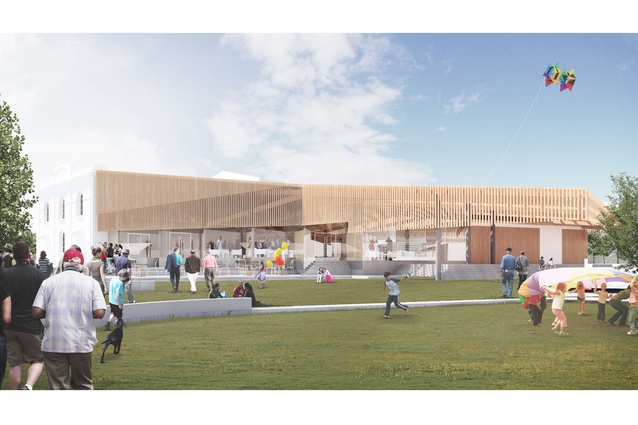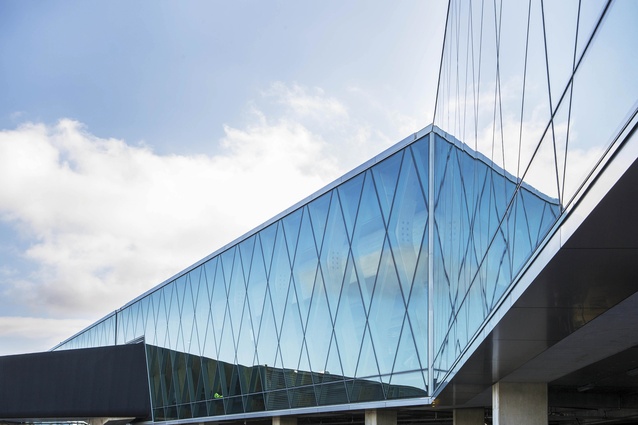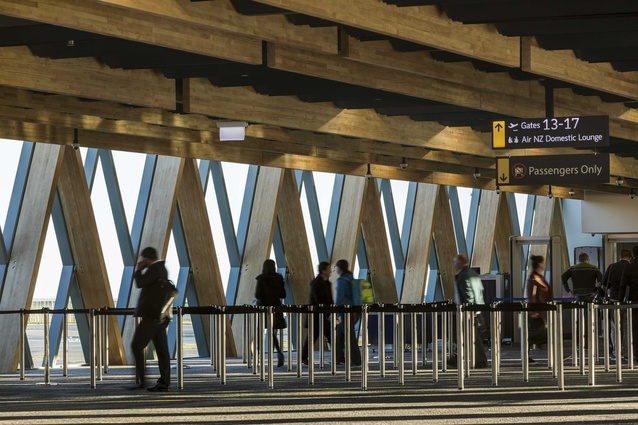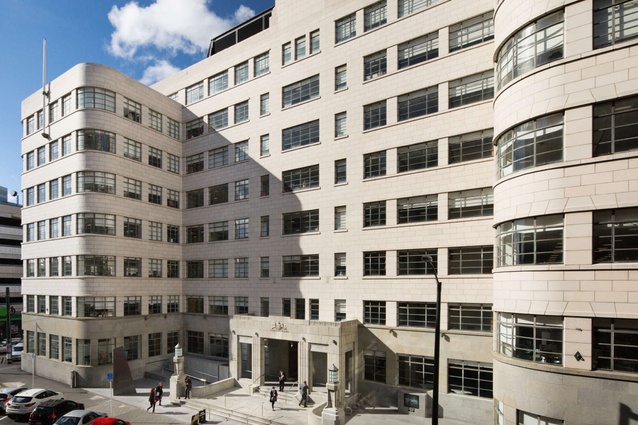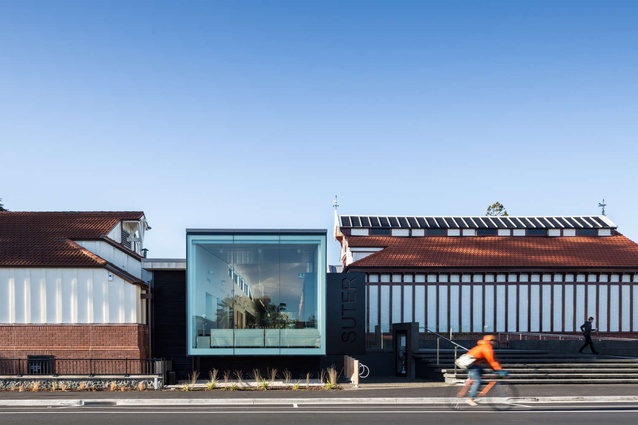Diversity talks: Katherine Skipper
Katherine Skipper now has two decades of experience under her belt, including 10 years of running her own design practice. She has taken on several leadership roles including serving as a branch chair for the Wellington chapter of the New Zealand Institute of Architects. Recently, she was named studio lead for Warren and Mahoney in Wellington.
Upon meeting Katherine, it’s immediately clear that she approaches her responsibilities thoughtfully and she speaks about her professional journey with authenticity and gravitas. It is easy to see that she is a natural-born leader. Two years on from her first interview with ArchitectureNow, Katherine speaks with Ashley Cusick about being a woman in the workplace, taking on leadership roles and lessons from running her own practice.
Ashley Cusick (AC): Warren and Mahoney is one of the founding members of the Diversity Agenda and you’ve also worked for yourself. I want to talk a little bit about being a woman in this field. Are there any challenges you’ve faced either in being a woman running your own practice or working in a large firm?
Katherine Skipper (KS): I understand what you’re asking, but it’s difficult to unpack that because I only have one experience, which is my experience of what it’s been like, and I happen to be female. I can’t compare what my journey would have been like if I’d been male because there’s no switch to check that. There’s no parallel universe where I’m a man. I find it a really interesting question, though.
If I think about it, a challenge I’ve faced, in both arenas, is that there’s been a real lack of seeing other women in architectural leadership roles. That’s not something that I saw much of. I don’t remember ever thinking I’ve got no one to call, but I can look back now and see that’s probably been true in the past.
I feel less like that now. I think the tactic that I’ve used, is to look for role models outside of architecture. Architecture is the technology, or the skill set, that I have, but females can be leaders across a whole lot of different industries. So, there are things to learn from many different people that you can apply to your technology.
I might be able to point to times where I’ve felt that my voice isn’t heard at the table. Not often. Frustratingly, you often don’t recognize it until afterwards and you think, “I don’t think they were listening to my point of view.” It’s much easier if you can catch it at the time because you can amplify yourself a little bit.
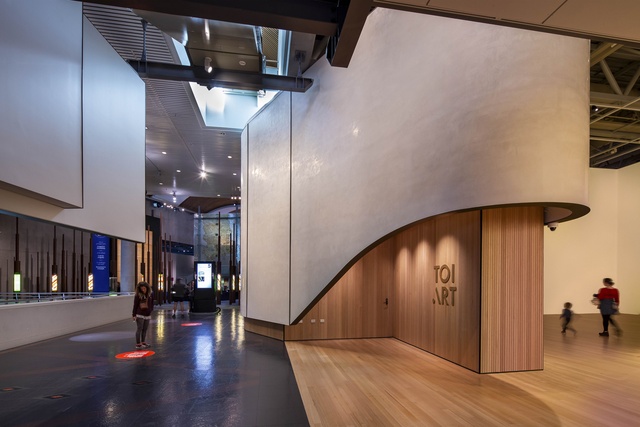
AC: Flexibility is a big thing with the Diversity Agenda. Did you find more flexibility when you were working for yourself?
KS: Yes, in some regards. When you work for yourself you’re obviously flexible. You work when you want to. The challenge is there’s only you to complete the work. If there is an issue at a time when you would really rather be at sports day with your kids – that’s a challenge.
You have to make a judgement on whether you’re going to stay at sports day or go off to the side of the field and take a phone call about why all the precast is the wrong shape. So, you get the flexibility, but the downside is that you get a huge amount of responsibility. When I came back to Warren and Mahoney, I just said, “These are the hours I need to work.” And that was fine. And that was back in 2012.
I think flexibility is really important for diversity. I don’t think it’s only a female thing. It’s enabling everybody to have full and wholesome lives. It is complex though. The correct amount of flexibility is different for every person and every project and every client. It has to be a personal conversation about what’s right for that group at that time.
I’m probably making it sound harder than it is, but I think it’s not just as simple as saying, “All of you just go and work flexibly.” That’s why it’s good to talk about it. Obviously, because of the Diversity Agenda involvement and support, flexibility and how we look at that is something that Warren and Mahoney are looking at.
AC: That’s one thing that I really like about The Diversity Agenda. It is opening up that discussion. Often, working flexibly is synonymous with slacking off. If we open up a wider discussion about why people need flexibility, that’s going to be progress in any case, I think.
KS: Yes, the thing I keep saying every time I talk about it is: I think we are, as an industry, focused on inputs – at every level and every phase. But actually, we need to turn it around and be more focused on outputs.
We need to complete a design at this time. How is everybody outputting to create that design at that time? You don’t just get a design because you’re at your desk at seven in the morning and you leave a midnight.
There’s a happy medium. It’s also about everybody feeling that the solution is fair. The other extreme of just coming in at 11am and banging out a concept design and leaving at 12 doesn’t work either. Maybe we need to shift the conversation a little bit to say: I need more flexibility, these are the things that I’m outputting and this what I can achieve in this time. If it all aligns, then that’s quite a good conversation to have, I think.
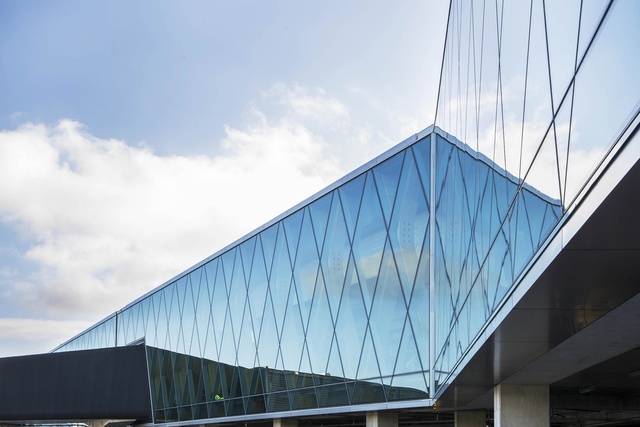
AC: Obviously, the Diversity Agenda addresses a real problem about how many women are in the field and in leadership. Have you seen any shifts here at Warren and Mahoney or in the industry in general that are encouraging diversity?
KS: The New Zealand Institute of Architects is teaming up with Engineering New Zealand to actually start a conversation. That’s a huge shift in itself. Internally, we’re shifting in that diversity is now a standing item on the board papers. There’s a committee, which includes principals, that is working towards what our response could be, should be, can be. We’re having all of those discussions.
In terms of the industry, I think it’s just that we’re talking about it now. The Diversity Agenda has created this ability for people to create events that have all sorts of different speakers, and people come together that might not have come together before to talk about it.
AC: There’s an idea that is talked about in one of the Diversity Agenda’s videos that really struck me; it’s about shifting our culture from one of equality – which means sameness – to one of equity – which means fairness. You said something similar in your last interview with us. You mentioned that in an ideal, most equal world, we still might not have an even 50/50 split of men and women in firms. How do you think we can shift our thinking from trying to create an equal environment to trying to create a fair one?
KS: I think it’s about listening to people and what they need. Policies are really important, but so is listening to the people within your organisation and what equity means to them. You can’t impose it on other people. It’s the same way that we approach a project. Before we even start designing, we’re trying to understand the identity of the people who we are working with and what’s important to them. It’s the same thing with equity. To truly respond to what somebody needs, you have to listen to and understand him or her.
How you do that is not an overnight thing. In some respects – and this is a personal opinion – you can’t rush in to it. I think that’s where that 50/50 comment came from. It’s not saying we want to be more diverse and that means “this.” Therefore, we’ll just put in a quota and that will happen. That’s not equity. We need to be a bit vulnerable about that. It’s okay not to know what the answer is straight away.
AC: You also said in our earlier interview that equality is everyone having the option to do the things they want to do, and I think that’s probably the essence fairness as well. It is asking: Does every woman have the same opportunity to be a leader as a man?
KS: You’re hitting the nail on the head. So, what are the things that are happening within our industry right now that, without us even knowing, are blocking people’s options? I find that quite hard to see, and that’s why it’s not simple to solve. If it were simple to solve, we would have just solved it by now, right? It doesn’t make sense to not be diverse. Diversity gives you, always, a much better result.
You’re right; it is about having the choice. The curious thing, to me, is if it’s not a number – if it’s not something you can quantify – then how do you know when you’ve got there?
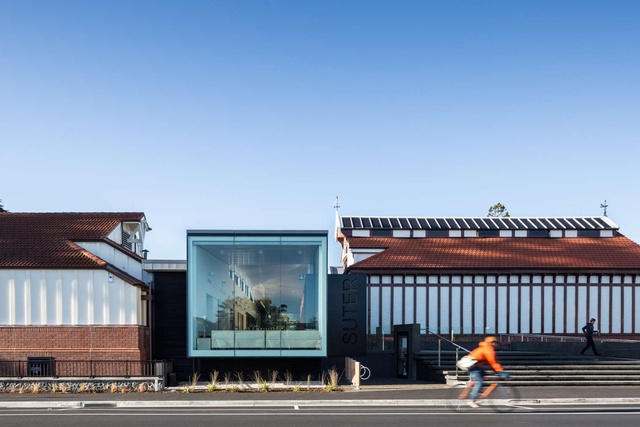
AC: When you look around at your female peers, do you feel like they’ve had the same options that you’ve had to step into leadership?
KS: Within my peer group there are people who sit on boards at major New Zealand companies and there are people who work for not for profits and they work part time. Your question is: Have my peers had the same opportunity for leadership progression? I’d say they probably all have. Some of them have taken those opportunities. I look at some of my friends and I look to them for advice about my career progression in a more commercial or corporate sense.
But, I also look to my other friends, who work for not for profits, because she – I’m thinking about one person in particular – has had opportunities for leadership but she’s chosen something else which is about what she wants to do with her life and the change she can make. And that’s incredibly powerful and inspiring. And that’s leadership, too. It’s just not leadership in an organisation of 300 people. They’re equally valid. I believe that what you have to do is find out the purpose that you have and how you can best achieve your purpose.
AC: Have you always been a leader? We’re you the one to volunteer as group leader in school?
KS: My friends would say no, but I suppose the answer is probably yes. That is an interesting question because I haven’t really thought about it before. It’s kind of a social conscious thing. I think I believe that if I can add value to something because of the skills that I have, then I should. The leadership role [with the Wellington branch of the NZIA], I took that on for a number of reasons. One being that I think it’s really important for women architects in leadership positions to try and be visible where we can.
AC: I think I asked that because we often get this idea of what women leaders are like in our head, and we think they have to fit in to one mould.
KS: If I’m completely honest about myself, I’ve always felt – and I also have to credit my parents on this – I’ve always felt that my opinion mattered. Sometimes if you feel safe enough to give your opinion, other people look to that and it resonates with them. I think that’s part of leadership, and in regards to that part, I’ve probably always been that way.
AC: I love meeting women in leadership because I think they are a really diverse group. Even though you have this media trope of the domineering and unkind female leader, that’s not the reality at all.
KS: That hasn’t been my experience. I think it touches on an interesting point, though. It comes back to the diversity and equity thing. In order to “succeed” in a potentially male-dominated field – well, not potentially, we know that are more males than females in architecture – the answer is not to become anything other than what you inherently are.
The answer is not to suppress the feminine and become like somebody else – whether that’s male or a different culture or whatever – the answer is to own your own perspective and give yourself permission to speak. It’s accepting that your position is valid, and the way you approach things is valid. And that transcends gender. The more people that can feel empowered and that they matter the better, because then they can speak out and other people might think, “That’s how I feel too.”
AC: It’s almost the opposite of what you’d expect. You have to become more yourself rather than becoming someone else.
KS: I absolutely think that’s true. It is really exciting, and it can be really hard.
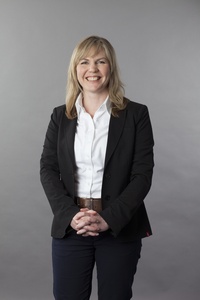
AC: Do you feel like your time on your own set you up for coming back and stepping into leadership roles in a big firm?
KS: Working for yourself, you obviously have this sense of ownership of everything to do with making money and a project being completed. Because I did that, when I came back to a bigger firm that’s the way I felt even when I was part of a team. It gives you a different perspective. Instead of waiting for somebody else to tell me what should happen, I have always tried to think about where we’re trying to head there and what things I can do to make us get there.
I think that’s the single biggest thing that I took from working on my own to working in big practice. That’s not to say everybody that wants to be in leadership needs to work for themselves, but I did. It’s quite interesting because you can often see when it switches with people, the switch from waiting for direction to giving direction.
AC: Last time we spoke to you, we asked about what advice you would give to younger architects. Have you gained any new wisdom from the past two years to share with everyone?
KS: In the last two years what I’ve learned is that sometimes you get this uncomfortable feeling, in a professional sense. Not like, “I’m out of control.” More like, “I’m not sure, I’m feeling uncomfortable, I don’t know if I can do this.” It’s like an anxiety, a feeling of slightly reaching too far. What I’ve realised is that you have to recognise that and kind of lean in to it, because it’s when you’re growing. It means that someone else believes in you. They’ve said, “Katherine can do it so we’ll get her to lead this.” They work with you all the time, they’ve worked out that you’re capable, and they’re giving you the license to do it.
It can feel really uncomfortable because you haven’t yet accepted that you can do it. The biggest thing I’ve learned is when I feel like that – because, everybody feels like that, I think – is to just have a minute and go, “It’s okay that I’m feeling like this. That doesn’t mean I can’t do it, it just means that I need a bit of help or I need to accept the fact that I may not be perfect when I do this the first time. And I need to be grateful that somebody else has given me this opportunity.”
AC: Do you have anything else to add?
KS: The more layers I go through and every different role I’ve had, when I’ve met my new peers I’ve suddenly realised that they’re just people too. They often just want to be great architects, great designers, they have families, they want to be the best parent, or they have interests outside work. They are all just people like me. I think you start out when you leave architecture school thinking that people who take leadership positions are different, but they’re actually not. Nobody’s perfect. And I just… I don’t want to be put in a box as ‘other’. That’s not going to get us anywhere. We all have to feel empowered in order to get where we want to go.

